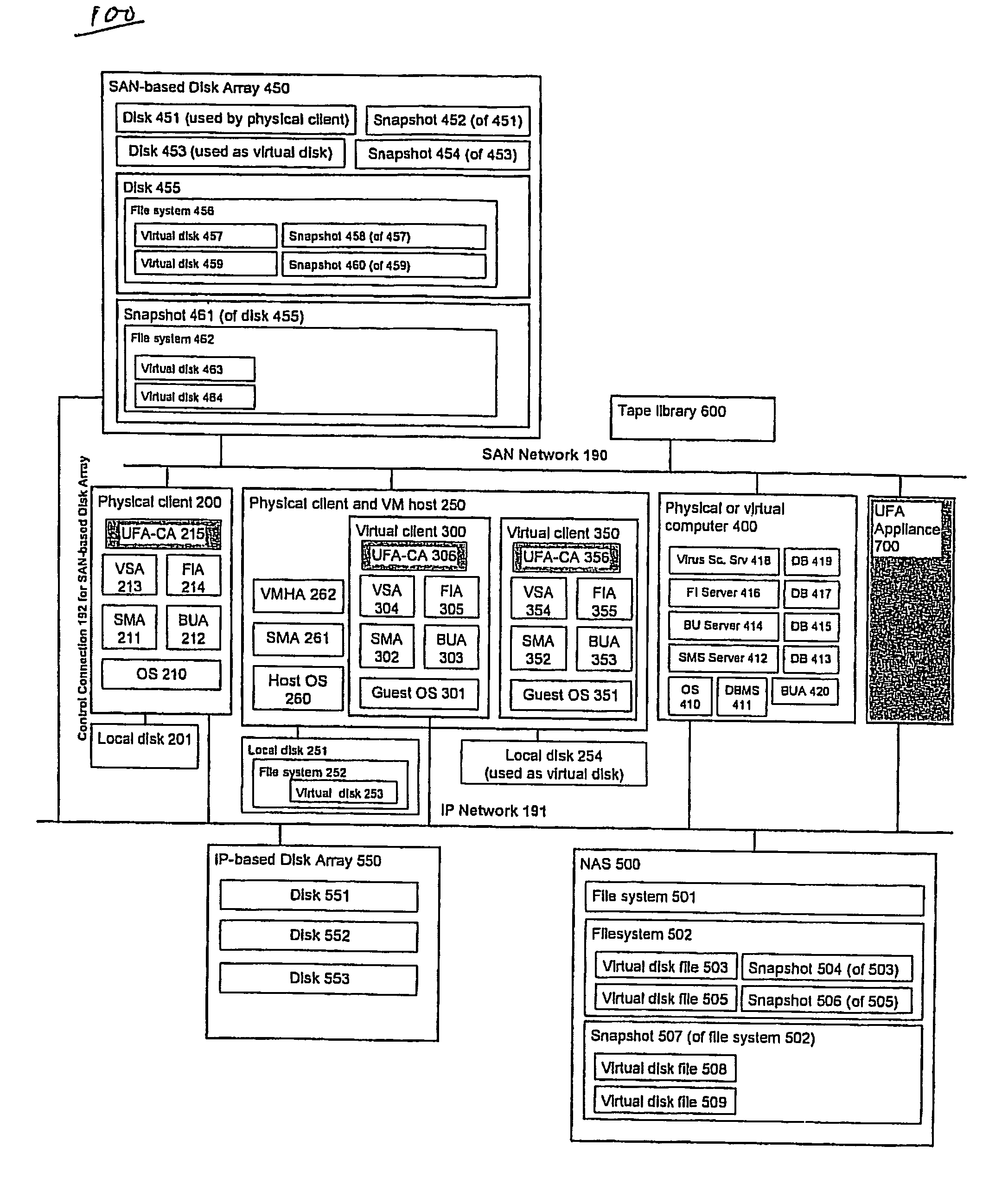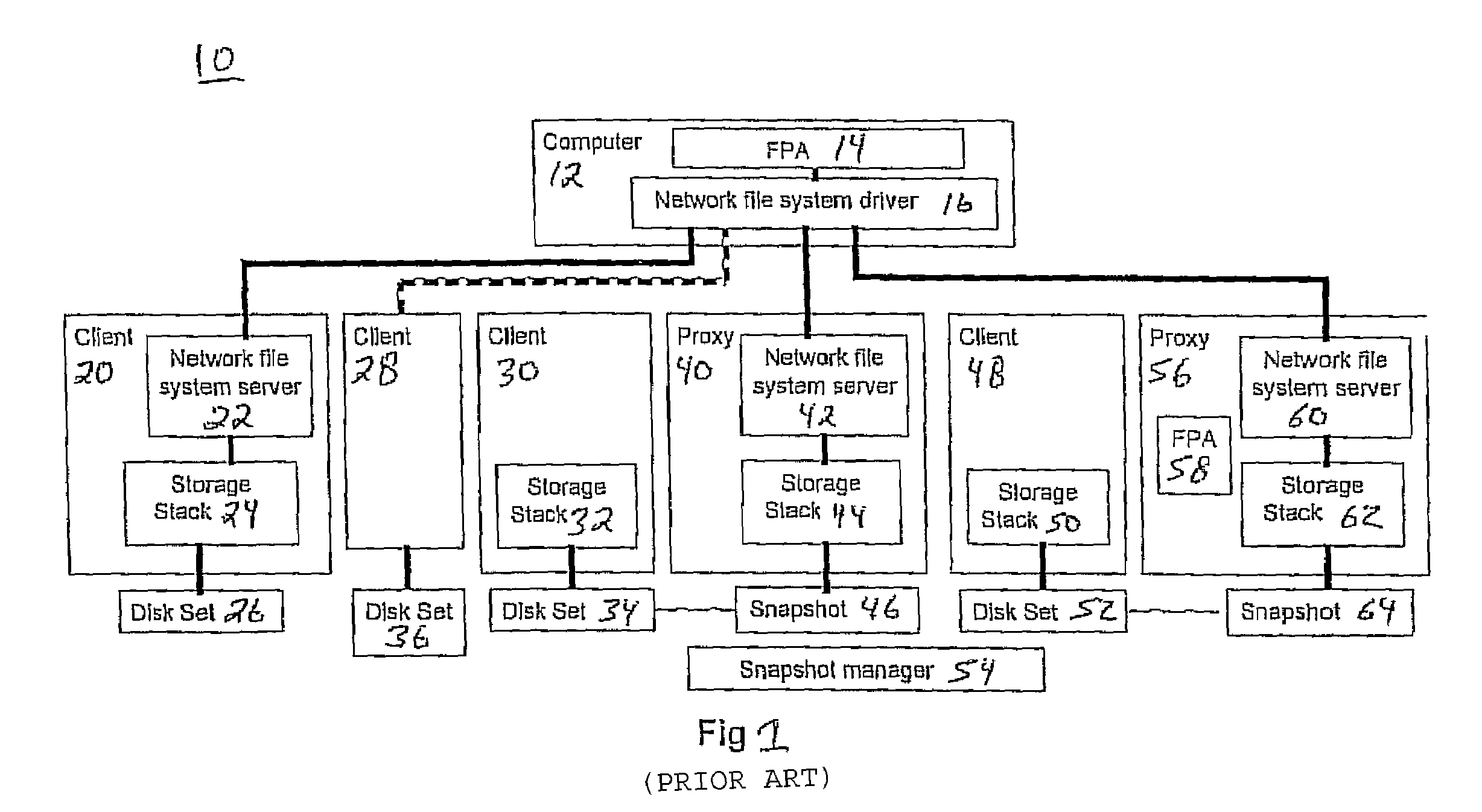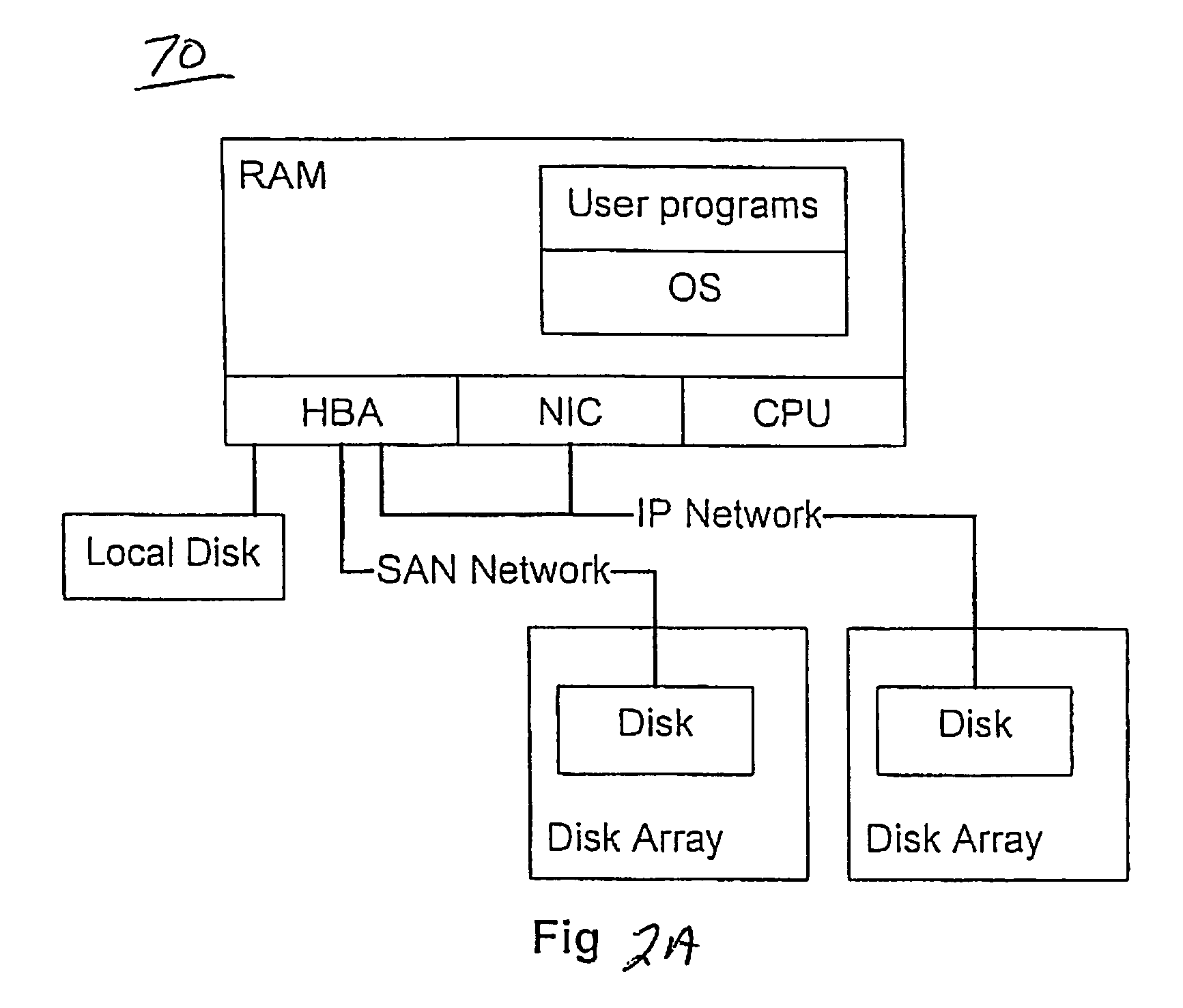In a managed computing environment, there are a large number of issues and trade-offs to consider when setting up a file processing application (FPA) for offloaded
client file access.
The trade-offs between synchronized file system access versus snapshot access, along with the dependences introduced by proxy-based snapshot access methods, usually result in highly specialized configurations that unnecessarily tie file processing applications to storage infrastructure elements.
There are many difficulties with the offloaded file access methods of the prior art, as illustrated in FIG. 1.
However, synchronized network access to a
client's file systems suffers from several limitations.
Also, a connection cannot be made if the computer hosting the FPA and the client computer have incompatible
network file system components, in other words, a
server component and a driver component that do not use the same
file sharing protocol.
The requester may not be able to access a file locked by a program running on the client, called the “busy files” problem.
This is an issue if the requester is a
backup application, in which case locked files will be skipped by the
backup process.
Unfortunately, using snapshots introduces new problems.
Not only does this configuration increase hardware costs, it also increases setup and management complexity.
The incompatibilities above also complicate the design and configuration of file processing applications.
Such a set up can reduce flexibility even more, since the FPA cannot locally access the file systems of clients dissimilar to client 48.
When an FPA relies on a particular proxy for accessing snapshots, the proxy becomes a potential performance
bottleneck limiting
scalability.
This limits the number of simultaneous snapshots and file systems that a FPA can process in parallel at a given time.
The FPA can be configured to access one file system at a time to avoid
concurrency issues, but this would increase the total amount of time needed to process a potentially large number of file systems belonging to multiple clients.
A final drawback of snapshot access is caused by the definition of snapshots themselves.
If a FPA accesses a client's file systems through a snapshot of the client's disks, it will be incapable of making any modifications to the current version of client's file systems, since the snapshot represents a past version.
Virtual machines whose virtual disks are mapped to files instead of physical disks introduce additional issues for offloaded file processing applications.
Accessing the file systems of a powered-off
virtual machine or a
virtual machine snapshot is more difficult, since an additional storage stack is needed to access the file systems that contain the virtual disks.
For this reason, existing systems and
storage management software generally offer no or limited file access support for inactive, file-based virtual machines.
This problem is compounded by the fact that computing environments that include virtual machines tend to have large numbers of powered-off virtual machines.
Unlike real machines, file-based VMs are easy to duplicate because they are just files, and this can lead to large numbers of VMs.
On the other hand, running a VM consumes a hosts' CPU and memory resources, potentially impacting other VMs running on the same host, so VMs that are not immediately needed in daily business operations tend to be left powered off.
In summary, it is difficult for offloaded file processing applications that provide protection and prevention, such as file
backup and
virus scanning applications, to access the files of powered-off VMs.
Since they cannot be checked and protected around the
clock, inactive VMs can
pose a security
threat or data protection problem to the IT administrator.
Once the
access method is selected, the File
Processing Application (FPA) has to operate with the limitations of that method, such as the busy files problem and the inability to access powered-off clients in case of synchronized network access.
A proxy computer's limited ability to decode diverse volume and file system formats restricts the FPA's ability to process the files of client disk sets not compatible with the proxy.
Despite virtual machines becoming an increasingly important component of modern computing environments, existing systems and
storage management infrastructures provide limited offloaded file access ability to virtual disks.
In particular, it is difficult or impossible for centralized FPAs to access the file systems of suspended and powered-off VMs.
Therefore, the prior art lacks a general and scalable mechanism for a file processing application to access the file systems of diverse computers in diverse states.
This results in highly specialized and inflexible setups that can be time-consuming and costly to set up.
In particular, when snapshots and proxies are used in a heterogonous environment, the diverse LVM and file system driver requirements imposed on proxy computers can increase hardware costs and complicate
software configurations.
This means that FPAs and proxies generally have to be aware of each other and are configured together, thereby increasing setup complexity.
Finally, there currently exists no general framework allowing centralized FPAs to access the file systems of file-based virtual machines, especially powered-off virtual machines and virtual disk snapshots.
 Login to View More
Login to View More  Login to View More
Login to View More 


